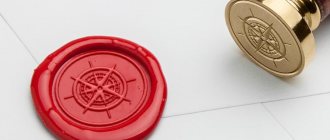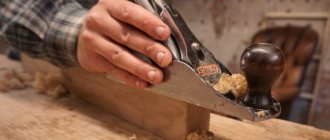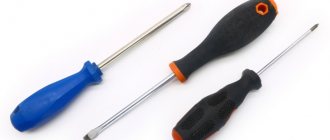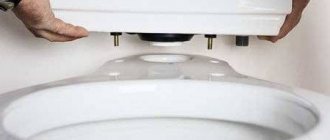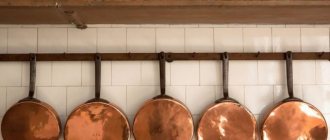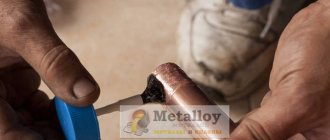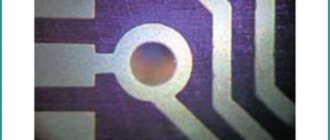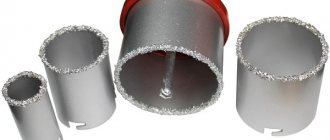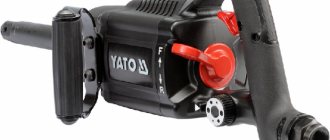Sharpening with diamond stones
In today’s fast-paced world, not everyone has the opportunity to have time to try everything “by heart” and therefore we usually use the capabilities of the network, where you can watch videos, read reviews, etc. But in essence: find those who share verified information that actually works.
There is a ton of everything on Aliska, and under each product there are reviews. And people buy mainly based on them! True, then there are other reviews that don’t get there and people share them among themselves.
But who leaves these same reviews? In the words of the classic: “Who are the judges?” I am sharing only what I was able to test from my own experience, through a huge amount of trial and error. Namely, the choice between: diamond stones, natural stones and sandpaper?
Once upon a time I myself was looking for answers to these same questions and it took me many years to do this, and it seems that this process will never end, because technology is constantly developing. The main advantage of diamond bars is:
- increasing the accuracy of processing tools and parts;
- increase in tool life after diamond sharpening by 1.2-2.5 times;
- increase in labor productivity up to 50%;
- improving working conditions and production culture;
- reduction in processing costs by 1.5-2.0 times.
I made my personal choice on two types of bars, based on the price-quality ratio, the wide range of tasks performed and the technology for manufacturing the bars.
Organic and metal binders have their undeniable advantages, but these are rather specialized production needs. For household chores, such bars are bought for life and will be left for your grandchildren! Although they require attention, care and maintenance, which incurs additional costs.
In electroplating, the crystals protrude high from the bundle, but in other cases, they are recessed, which immediately affects performance. And here the price issue comes first: galvanized bars cost two to five times cheaper! Simple Chinese bars can withstand 2-3 months under heavy loads in the workshop.
Domestic ones, from good manufacturers, can work for more than one year! For example, for double-sided bars, the manufacturer provides a five-year warranty . And at this price, there is no need to worry about their fate, because it is just an inexpensive consumable, approximately at the level of sandpaper.
There is, of course, nostalgia for Soviet diamond bars, but modern galvanic ones surpass all others in terms of roughing speed. And in this short video episode, just one minute, you can clearly see this. If the video started from the very beginning, go to 4:56.
I use diamonds in the initial stages so as not to waste precious time, and then sandpaper: Peculiarities of sharpening with sandpaper.
This video shows a simple example of using two types of diamond bars created by electroplating. The whole job took a little over an hour.
Perhaps some “naturalists” could cope with this task, but it will take a lot of time and the main question immediately arises in my mind: What state will they then find themselves in after tool steel? How much time and effort will it take to bring the stones back to life? It's not like sharpening kitchen knives.
Next, I want to share a review of processing with diamond stones, which helped me understand a lot when I was just starting to seriously dive into the topic. In my opinion, this is the best I’ve seen on the Internet, because I checked everything in practice. In your daily work, you have to use various abrasives.
Over many years of experience and direct work on sharpening, I settled on diamond bars and sandpaper. And that's why:
- Reliable, predictable results
- High speed of performing large volumes of work,
- Minimal maintenance
- Long-term use and competitive price for natural resources.
All these factors led my collection of natural stones to a box, in the farthest corner, many years ago. Of course, we need different sets and standard sizes of diamond stones, because the versatility of the Strogov sharpening system allows you to use almost any type of size and manufacturer, since you can use a universal abrasive holder:
Every day, a variety of tools are sharpened, from nail scissors to tactical bladed weapons, made from various types of hard steel, and diamonds handle all this variety easily and effortlessly! When it comes to household needs, everything is much simpler and a couple of stones are enough, without much consideration for the bunch of crystals, the base material, and more on this later in the article.
Options for sharpening a ceramic knife at home on one side
To sharpen a ceramic knife with a single-sided blade at home, you mainly need to process only the side where there is a descent:
- The instrument must be well washed. It is thoroughly wiped and any remaining moisture is allowed to evaporate.
- Initially, the lower part of the descent is processed without touching the cutting edge. The blade is placed on the device with this sharpened side, pressed from above so that the planes are pressed against each other. It should be moved in the direction from the butt to the blade and vice versa, while simultaneously moving from the tip to the handle. The blunt part of the blade should be facing the master.
- Then the cutting edge itself is sharpened. The blade is placed in the same position as in the previous stage, that is, going down, but slightly tilted forward. The lower part of the blade is pressed more tightly against the block, the cutting edge is in direct contact with it. You need to work in the same way - with small movements from the butt to the blade with a simultaneous transition along its entire length from the handle to the tip.
- The blade is turned over with its flat side facing the block. And process the cutting edge with a few light movements. The rest of this side of the blade should remain intact.
- The knife is returned to its previous position. And once again lightly process the cutting edge of the side with the descent to remove errors.
How to repair a ceramic knife
The need to repair a ceramic knife arises if unevenness or chips have formed on the blade due to careless or prolonged use. For shallow defects, you can try to resharpen the tool:
- First, mark with a marker the area of the blade that needs to be removed along the entire length of the blade part.
- It is then ground down on a machine with a diamond blade.
- The edge is sharpened on both sides using a softer abrasive.
After this, the width of the blade will, of course, decrease slightly, but the knife will be usable. Instead of a machine, other sharpening devices are also used, but with them the work will last longer.
Watch the video on how to sharpen a ceramic knife:
How to sharpen ceramic knives at home
You can sharpen ceramic knives at home using one of the following devices:
- musat,
- bars or stones of different abrasiveness, not forgetting to moisten them with water;
- machine with diamond discs (harder and finer-grained grinding);
- hand knife;
- electric sharpener;
- diamond paste if the blade is slightly dull.
But ceramic sharpening is not very suitable for such knives. These are materials of the same hardness. Therefore, the blade is more likely to crumble than become sharper. A zirconium dioxide blade should be treated with an abrasive with a higher hardness.
Musat sharpener
Diamond musat
The musat sharpener is a metal rod with a handle. Externally, the tool resembles an enlarged screwdriver with a thick and longer shaft, of the same diameter along its entire length.
The working part can be made of metal or ceramics. There are always notches on it. On ceramic musat they are both large and small, that is, the tool is suitable for rougher work and surface grinding at the same time. But for the type of blades under consideration, metal is more suitable. They should be careful not to damage the edge.
To process a dull blade, the knife is held in the right hand, and the musat is fixed with the left. The latter remains motionless; you can, for example, install it at one end on a wooden block. The blade of a knife is moved along the shaft with light pressure to make the edge sharper. Usually a few strokes up and down along the working part of the musat are needed.
With this device it is more difficult to maintain the correct angle of sharpening the knife. But when using it, it is easy to control the pressure on the blade, that is, there is less chance of damaging it.
Knife stone and block
As a knife, you can use bars of different abrasiveness and sharpening stones:
- The first ones are small in size and light. Therefore, when working with them, the blade is fixed motionless, and the block must be moved along the blade with slight pressure. It is more convenient to do this if you have a sharpening system such as Lansky, Efim or Skladishok.
Diamond bars with abrasiveness of 240, 600 and 1000 grit are suitable for ceramics; they are used in the same sequence. Be sure to wet the surface of each of them with water several times during the process, otherwise there is a risk of breaking the blade. To reduce the likelihood of the material splitting, you can use 800, 1600 and 3000 grit abrasives. But they will have to work longer.
- The stones are large and heavy. Therefore, they must remain motionless during the sharpening process. And the blade is placed on top, observing the angle, and the blade is processed with movements from the handle to the tip. Before starting the process, the stone should be soaked in water for half an hour or a little longer. And while sharpening, you should pour liquid over it from time to time.
It will take quite a long time to process the knife with bars and stones. Without using a set with guide rods and a vice that allows you to fix the blade and accurately set the abrasive, there is a risk of deviating from the factory sharpening angle. But if you work carefully and take your time, you can bring the blade to perfection. And there is less chance of breaking the blade.
Special machine
Sharpening machine Tormek T4
The machine for knives with ceramic blades is a disk device. It runs on electricity. When turned on, the disk begins to rotate, and the blade should touch its surface. This allows you to sharpen the knife faster, but requires great care. To avoid accidentally damaging the blade, it is important:
- set the average rotation speed (no more than 200-300 rpm);
- lean the blade against the surface of the disc evenly along the entire length, but do not press too hard;
- For initial processing, use 80 micron diamond abrasive, for finishing - 40 microns.
If the blade has a double-sided sharpening of the blade, first treat one side with the first disk, then the second. Then install another abrasive and repeat the process.
This method of sharpening kitchen tools is one of the fastest. But due to inexperience, the knife can easily be damaged.
Hand sharpener
A manual sharpener for ceramic blades is a stable plastic base with grooves that have an abrasive surface on the inside. Usually there are 2 or 3 of them - the main ones and for finishing the blade. The blade must be inserted into the groove and the knife must be moved back and forth.
This device is safe and allows you to more accurately maintain the sharpening angle. Problems may arise if the thickness of the blade is less than or greater than the clearance of the groove.
Electric sharpener
Electric sharpener for ceramic and steel knives Chef'sChoice 700 CH/700
Electric sharpeners are similar in appearance to manual ones, that is, they also represent a main block with grooves for blades. But there are significant differences:
- they operate on batteries, accumulator or mains;
- abrasive discs located in the grooves move when the device is turned on;
- You can change the sharpening angle, adjusting it to the initial indicator of the knife.
The device is activated by pressing a button. The blade must be inserted into the groove with the blade down and pulled between the moving disks so that they pass along it from the base to the tip.
This method will achieve results much faster than using a manual sharpener. And it is difficult to damage a knife with an electric device by making the blade wavy. But the cost of a good unit is 3-10 thousand rubles. And the cheap ones have too little power; sharpening the knife will be problematic.
Diamond paste
Diamond paste is used for final sharpening of a knife, or more precisely, for straightening after treating the blade with harder materials (must, whetstone, stone). The product gives the edge not only sharpness, but also smoothness. This also improves cutting properties.
The paste has a soft consistency, although it contains abrasive particles measuring 5 or 7 microns. The smaller the diamond dust particles, the more gentle the effect on the instrument. The product is applied in a thin layer onto a board with a flat surface. The blade of the knife is passed along the device with pressure so that all its areas are processed.
The procedure is quite long and painstaking, but the result is worth the time spent.
